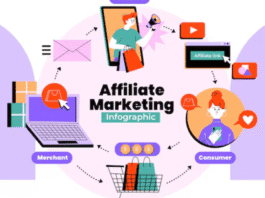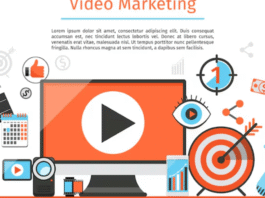Introduction
Marketing strategy in today’s competitive business landscape, a well-structured content marketing plan can differentiate between thriving and merely surviving. Content marketing drives engagement, builds trust, and establishes authority. Crafting a plan that resonates with your audience takes a blend of strategies. You need creativity and adaptability to achieve your business goals.
“When it comes to writing content, two factors are crucial: ‘perplexity’ and ‘burstiness.’ Perplexity measures text complexity, while burstiness compares sentence variation. A content marketing plan needs to show this balance, ensuring complexity where needed while retaining simplicity for easy understanding.”
This guide explores the key steps and considerations for creating a robust content marketing plan.
Understanding the Basics of Content Marketing
What is Content Marketing?
Content marketing involves creating and sharing valuable, relevant, and consistent content to attract and keep a target audience. Unlike traditional advertising, content marketing focuses on delivering information that adds value rather than directly promoting a product or service.
Why is Content Marketing Essential for Small Businesses?

Builds Brand Awareness: Quality content increases visibility.
Establishes Authority: Skill demonstrated through content fosters trust.
Engages the Audience: Keeps potential and existing customers informed and interested.
Boosts SEO Efforts: Optimized content helps improve search engine rankings.
Steps to Create a Content Marketing Plan
Step 1: Define Your Goals
Set your goals clearly. Set what you want to achieve with your content. Ask yourself:
What do you hope to achieve?
Is your aim to drive traffic, generate leads, or boost sales?
Step 2: Find Your Target Audience
Understanding your audience is pivotal. Create buyer personas by analyzing:
Demographics
Interests
Pain points
Online behavior
Step 3: Conduct a Content Audit
Review your existing content to find:
Gaps in addressing customer needs
Content that performs well
Opportunities for improvement or repurposing
This includes:
Step 4: Develop a Content Strategy
Deciding on content formats (blogs, videos, infographics, etc.)
Setting a content calendar to guarantee consistency
Determining your distribution channels
Types of Content to Include in Your Plan
Blog Posts
Blogs are excellent for sharing detailed insights, guides, and opinions. They help drive traffic and improve SEO.
Infographics
Infographics simplify complex data and make information visually engaging. These are highly shareable and effective for social media platforms.
Videos
Videos are versatile, offering storytelling opportunities that captivate audiences. Tutorials, testimonials, and behind-the-scenes clips work well.
Social Media Content
Platforms like Instagram, LinkedIn, and Twitter are crucial for connecting with your audience. Share tips, news, and updates tailored to each platform’s audience.
Case Studies and Testimonials
Highlight real-life examples and success stories to build credibility and trust.
Executing Your Content Marketing Plan
Step 1: Content Creation
Make sure content is:
Informative: Tackle audience needs and queries.
Engaging: Use storytelling and relatable scenarios.
SEO-Friendly: Incorporate keywords naturally.
Step 2: Distribution
Distribute content through:
Your website or blog
Email newsletters
Social media platforms
Industry forums or communities
Step 3: Promotion
Amplify your content’s reach by:
Run paid campaigns on Google Ads or social media. Collaborate with influencers. Encourage shares and interactions.
Step 4: Analyze and Improve
Use tools like Google Analytics or SEMrush to measure content performance. Focus on metrics like:
Page views. Bounce rate. Social shares. Conversion rates. H2: Challenges Small Businesses Face in Content Marketing
Limited Resources
Many small businesses have tight budgets. They also have small teams. Outsourcing or using affordable tools like Canva and Grammarly can help.
Maintaining Consistency
Creating a content calendar and sticking to it ensures regular posting, keeping your audience engaged.
Measuring ROI
Track metrics tied to your goals, like leads generated or sales conversions, to gauge success.
Tips for Writing High-Quality Content

Use Visuals and Data
Incorporate images, charts, and statistics. These elements make your content more appealing. They also add credibility.
Edit and Proofread Thoroughly
Well-polished content reflects professionalism. Use tools like Hemingway or ProWritingAid for assistance.
Improve for SEO
Focus on:
Keyword research. Meta descriptions. Internal and external linking.
Advanced Strategies for Content Marketing
Leverage User-Generated Content
Encourage customers to share their experiences with your brand. Feature their reviews, photos, or stories in your campaigns.
Personalization
Tailor content based on user preferences and behavior for better engagement.
Experiment with New Formats
Stay ahead of trends by exploring formats like podcasts, webinars, or augmented reality content.
Start today, and let your content be the voice that resonates with your audience!
rafting an Effective Content Marketing Plan
Creating a successful content marketing plan involves strategic thinking, meticulous planning, and adaptability. When crafted thoughtfully, a content marketing plan can propel your brand visibility, drive traffic, and convert leads into loyal customers. This comprehensive guide explores how to design a robust content marketing plan. It leverages the principles of “perplexity” and “burstiness”. These guarantee the text resonates with a human touch.
Understanding the Core of Content Marketing
What is a Content Marketing Plan?
A content marketing plan is a strategic roadmap that outlines how you’ll use content to achieve your business goals. It defines your target audience, content types, distribution channels, and key performance indicators (KPIs).
Why Does Your Business Need a Content Marketing Plan?
Without a plan, your content efforts lack direction. A content marketing plan ensures consistency, aligns your content with business objectives, and enhances audience engagement.
Key Elements of a Content Marketing Plan
Setting SMART Goals
Specific: Clearly define what you want to achieve.
Measurable: Quantify your success metrics.
Achievable: Set realistic targets.
Relevant: Align goals with broader business objectives.
Time-bound: Set deadlines to track progress.
Defining Your Target Audience
Understanding your audience is crucial. Create detailed buyer personas by analyzing demographics, behavior patterns, pain points, and preferences in marketing strategy.
Tools to Understand Your Audience
Google Analytics for website insights.
Social media analytics for engagement metrics.
Customer surveys and feedback forms.
Crafting High-Quality Content
Content Types and Formats
Diversify your content to cater to various audience preferences marketing strategy.:
Blogs: Informative and SEO-friendly.
Videos: Engaging and shareable.
Infographics: Visually appealing for quick insights.
Podcasts: Ideal for multitasking listeners.
E-books and Whitepapers: In-depth resources for serious learners.
Repurposing Content
Maximize the value of your content by repurposing it. For instance marketing strategy.:
Convert blog posts into videos.
Use podcast transcripts to create articles.
Turn data from whitepapers into infographics.
Maintaining Content Quality
Quality trumps quantity. Focus on marketing strategy.:
Thorough research.
Clear, concise, and error-free writing.
Including compelling visuals and media.
Content Distribution Strategies
Leveraging Owned, Earned, and Paid Media
Owned Media: Your website, blog, and email list.
Earned Media: Mentions, shares, and backlinks.
Paid Media: Social media ads, PPC campaigns, and influencer partnerships.
Find platforms where your audience is most active in marketing strategy.:
Choosing the Right Channels
LinkedIn for B2B marketing.
Instagram for visually-driven campaigns.
Email newsletters for personalized engagement.
Polishing for SEO

Keyword Research and Integration
Use tools like SEMrush or Ahrefs to find high-impact keywords.
Strategically place keywords in titles, headers, and meta descriptions in marketing strategy.
On-Page SEO Best Practices
Write engaging meta titles and descriptions.
Use alt text for images.
Improve for mobile responsiveness.
Measuring and Refining Your Strategy
Tracking Performance Metrics
Use tools like Google Analytics. HubSpot is another choice. These tools track the effectiveness of your content. Key metrics include:
Traffic and page views.
Conversion rates.
Social shares and engagement.
Conduct A/B testing to compare content variations.
Analyze what resonates with your audience and refine it suitably.
Stay updated with trends to keep content fresh and relevant in marketing strategy.
Advanced Tips for Content Marketing Success
Storytelling as a Strategy
Stories captivate audiences. Share your brand’s journey, customer testimonials, or behind-the-scenes insights into marketing strategy.
Incorporating User-Generated Content
Encourage customers to share their experiences with your brand through reviews, photos, or social media posts in marketing strategy.
Embracing AI and Automation
Use AI-powered tools to streamline content creation, improve publishing schedules, and enhance personalization in marketing strategy.
Building Long-Term Relationships with Content
Establishing Authority
Position your brand as a thought leader. Do this by consistently delivering valuable and insightful content in marketing strategy.
Engaging with Your Community
Respond to comments, join in discussions, and foster a sense of connection with your audience in marketing strategy.
Conclusion
A well-executed content marketing strategy can transform your brand’s online presence. By understanding your audience, crafting quality content, and optimizing distribution, you set the foundation for sustained success. Remember, content marketing is not static; it evolves with trends and audience needs. Stay adaptable, measure your performance, and refine your strategies to keep relevance in a dynamic digital landscape.
Crafting a content marketing plan is not a one-time effort. It requires ongoing analysis, creativity, and adaptability. By balancing perplexity and burstiness in your writing, you effectively engage your audience. Align your content with your business goals to build authority and drive growth in marketing strategy.
Discover more from currentnewschannel.com
Subscribe to get the latest posts sent to your email.












